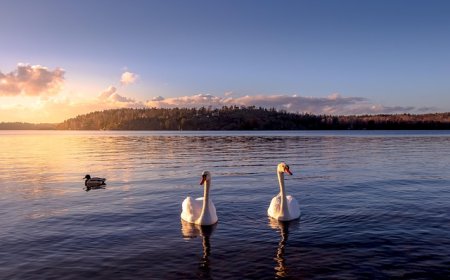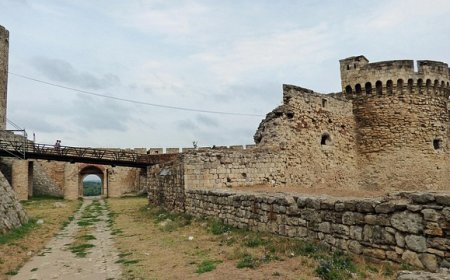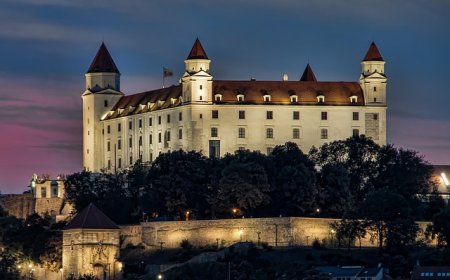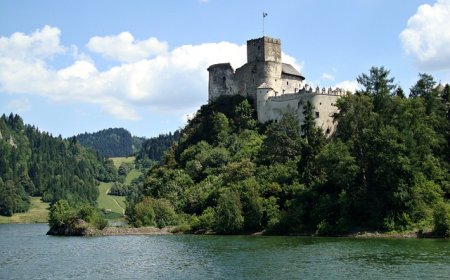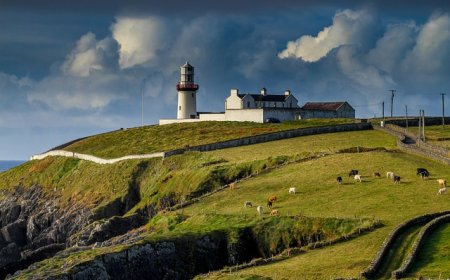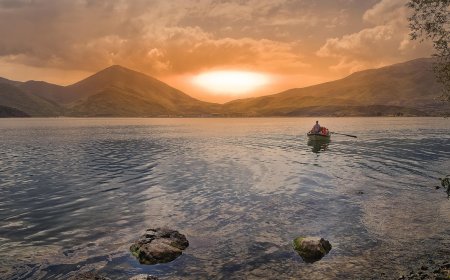Montenegro Facts for Kids – Geography, Culture & History of a Balkan Gem
Learn about Montenegro for kids. Discover the country's mountains, Adriatic coast, medieval towns, and cultural traditions that make it one of the most beautiful Balkan nations.
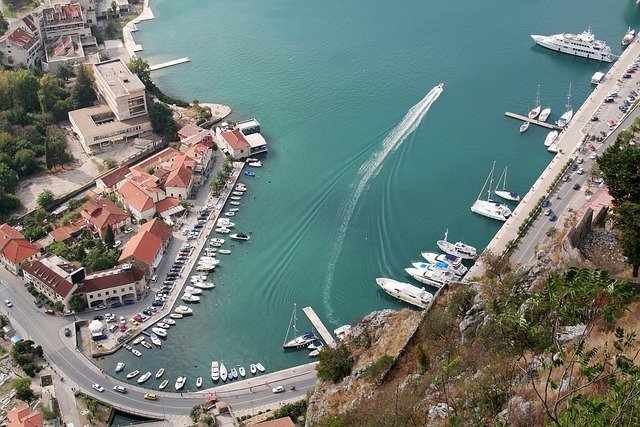
🇲🇪 Montenegro: Mountains by the Sea and a Heart Full of History
🗺 Introduction
Montenegro is a small but incredibly beautiful country in Southeastern Europe, where mountains meet the Adriatic Sea and ancient towns sit beside turquoise waters. Its name means “Black Mountain” in Italian, and that perfectly describes its dramatic, rocky landscapes.
Though small in size, Montenegro is full of charm, tradition, and natural wonder. From walled coastal cities to misty national parks, it’s a land where nature, history, and culture all come together in a compact, stunning package.
🌍 Geography and Location
Montenegro is part of the Balkan Peninsula, bordered by Croatia, Bosnia and Herzegovina, Serbia, Kosovo, and Albania. It has a coastline along the Adriatic Sea, with some of Europe’s most scenic beaches and bays.
The country is known for its steep mountains, deep river canyons, and glacial lakes. One of the most famous natural sites is the Bay of Kotor, a fjord-like bay surrounded by cliffs and medieval towns. Inland, the Durmitor Mountains are covered in snow in winter and wildflowers in summer.
Montenegro’s climate changes from Mediterranean near the coast (with hot summers and mild winters) to alpine in the mountains (with cold, snowy winters and cool summers).
🏙 Cities and Regions
The capital city is Podgorica, located in the central part of the country. It is Montenegro’s political and economic center, though it’s smaller and less touristy than some other cities.
Key cities and towns include:
- Kotor, a UNESCO World Heritage city with stone walls, winding alleys, and historic churches
- Budva, a coastal town known for its beaches and nightlife
- Cetinje, the old royal capital, full of museums and cultural sites
- Žabljak, a mountain town that serves as a gateway to Durmitor National Park
Each region of Montenegro has its own feel—coastal, mountain, or rural—and offers unique traditions, architecture, and ways of life.
👨👩👧👦 People, Language, and Culture
Montenegro has about 620,000 people, making it one of the smallest countries in Europe by population. Most people are ethnic Montenegrins, with groups of Serbs, Bosniaks, Albanians, and Croats as well.
The official language is Montenegrin, which is very similar to Serbian, Bosnian, and Croatian. It uses both the Cyrillic and Latin alphabets, depending on the region and speaker.
Montenegrins are known for their strong sense of pride, hospitality, and family values. Music, dance, and storytelling are important, especially in rural areas. Traditional clothing includes richly embroidered vests and long dresses worn during festivals and national holidays.
🍽 Food and Traditions
Montenegrin cuisine combines Mediterranean and Balkan flavors. Along the coast, seafood is popular, while the inland areas focus on meats, cheeses, and hearty stews. Many meals are cooked slowly and enjoyed with family.
Popular dishes include:
- Ćevapi – small grilled meat sausages, often served with bread and onions
- Kačamak – a thick cornmeal dish with cheese and cream, especially in the mountains
- Priganice – fried dough balls served with honey or cheese
- Sarma – cabbage rolls filled with rice and meat
- Njeguški pršut – a famous smoked ham from the village of Njeguši
Important holidays include Independence Day (May 21) and Statehood Day (July 13). People also celebrate religious festivals like Orthodox Christmas and Easter with music, dancing, and traditional foods.
🏛 History of Montenegro
Montenegro has a long and proud history. It was once part of the Roman and Byzantine Empires, and later ruled by medieval kingdoms and princes. In the 15th century, Montenegro resisted the Ottoman Empire longer than most Balkan regions, keeping its independence for centuries through brave mountain clans.
In the 1800s, Montenegro became a recognized kingdom, and after World War I, it joined Yugoslavia. When Yugoslavia broke apart in the 1990s, Montenegro stayed in a union with Serbia until 2006, when it voted to become an independent country again.
Today, Montenegro is a democratic republic, a member of NATO, and working to join the European Union. It welcomes visitors from around the world to experience its nature, history, and traditions.
🌿 Nature and Environment
Montenegro may be small, but it is one of the most biodiverse countries in Europe. It has five national parks, including:
- Durmitor National Park, with mountains, lakes, and deep canyons
- Biogradska Gora, one of the last primeval forests in Europe
- Lake Skadar, the largest lake in the Balkans, home to birds and rare animals
- Lovćen National Park, the site of the national hero Njegoš’s tomb
Montenegro is working hard to protect its natural environment through eco-tourism, recycling programs, and wildlife conservation. Schools often teach about sustainability and the importance of clean water, forests, and wildlife.
📚 Vocabulary List
| Word | Definition |
|---|---|
| Adriatic Sea | The sea on Montenegro’s western coast, part of the Mediterranean |
| Durmitor | A mountain range and national park in northern Montenegro |
| Kačamak | A traditional dish made of cornmeal, cheese, and cream |
| Podgorica | The capital city of Montenegro |
| Bay of Kotor | A deep coastal bay surrounded by mountains and historic towns |
| Cyrillic alphabet | A writing system used in many Slavic languages |
| Njeguški pršut | A type of smoked ham from the village of Njeguši |
| Yugoslavia | A former country in the Balkans that included Montenegro |
👧🧒 Kid-Friendly Summary
Montenegro is a tiny country with big mountains and pretty beaches. The name means “Black Mountain,” and the land is full of tall hills, clear lakes, and deep canyons. People live in cool old towns like Kotor and Budva, where you can walk on cobblestone streets and visit castles.
Montenegrins speak a language called Montenegrin, and they love music, dancing, and tasty foods like cheese cornmeal and sweet dough balls. Montenegro used to be part of a big country called Yugoslavia but is now independent. It’s a peaceful place where people take good care of nature.
🧠 Interactive Quiz: What Do You Know About Montenegro?
1. What is the capital of Montenegro?
A) Kotor
B) Cetinje
C) Podgorica
D) Budva
2. What sea borders Montenegro?
A) Black Sea
B) Adriatic Sea
C) Aegean Sea
D) Ionian Sea
3. What is the Bay of Kotor known for?
A) Factories
B) Wild animals
C) Scenic views and ancient towns
D) Ski resorts
4. What are ćevapi?
A) Soup
B) Grilled meat sausages
C) Fruit pastries
D) Stuffed peppers
5. What mountain park is famous in Montenegro?
A) Yellowstone
B) Durmitor National Park
C) Olympic National Park
D) Carpathian Reserve
6. When did Montenegro become independent again?
A) 1945
B) 1991
C) 2006
D) 2010
7. What is kačamak made from?
A) Potatoes
B) Cornmeal and cheese
C) Pasta
D) Rice
8. What does “Montenegro” mean in Italian?
A) Blue Lake
B) Tall Land
C) Green Valley
D) Black Mountain


















































